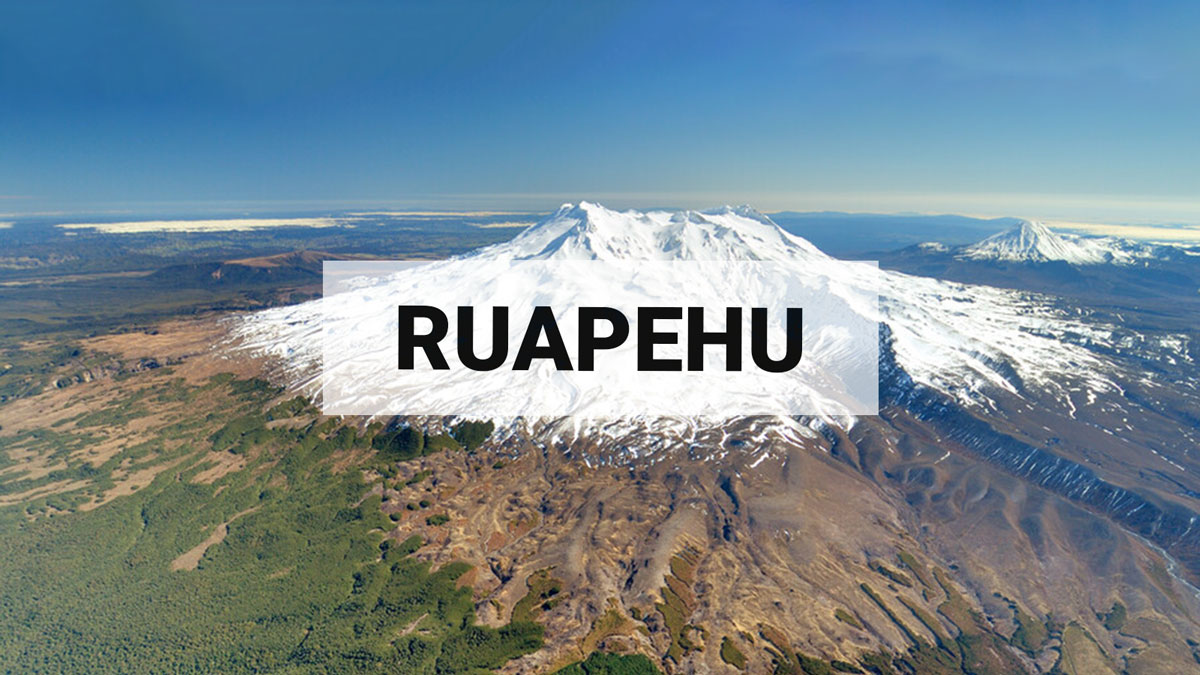
Mt Ruapehu Crater Lake starts heating - minor volcanic unrest continues. Volcanic Alert Level remains at 1.
Since mid-October the temperature of Te Wai ā-moe (Ruapehu Crater Lake) has been slowly heating. The current temperature is now around 18-19 °C, from a low of 8 °C in early October. We continue to measure low–moderate volcanic sulphur dioxide (SO₂) gas emissions, and low level of volcanic tremor. An eruption remains unlikely.
The Volcanic Alert Level remains at 1 and the Aviation Colour Code at Green.
Earlier this year, Te Wai ā-moe was in a cooling phase from February with the lake temperature dropping from about 30 ºC, to a low point of 8 ºC early October. During that cooling episode, the amounts of sulphur dioxide (SO₂) gas coming out through the lake decreased and volcanic tremor also declined, consistent with the cooling of the hydrothermal system beneath the lake.
There are now clear signs of reheating of Te Wai ā-moe (Ruapehu Crater Lake) with an increase in temperature of 10 ºC since early-October. The daily average is currently around 18–19 ºC. Both the increase and the current temperature are well within the expected norms.
The amount of sulphur dioxide (SO₂) gas has also increased since early October 2024, which shows that the vent is now more open than during the earlier cooling episode. That is consistent with observations of weak upwellings in the lake and floating strands of sulphur on the lake surface, and overall, more heat reaching and warming the lake.
Our recent observations are consistent with ongoing, low-level volcanic unrest at Ruapehu. We expect the lake to slowly continue heating up during the coming months as part of a typical Ruapehu heating-cooling episode.
Monitoring indicators remain consistent with a low level of volcanic activity. As a result, the Volcanic Alert Level remains at 1. The Aviation Colour Code remains Green.
More information: Mt Ruapehu is an active volcano and has the potential to erupt with little or no warning when in a state of minor volcanic unrest.
The Volcanic Alert Level reflects the current level of volcanic unrest. The Volcanic Alert Level should not be used to forecast future activity.
Volcanic Alert Level 1 indicates the primary hazards are those expected during volcanic unrest: steam discharge, volcanic gas, earthquakes, landslides, and hydrothermal activity. While Volcanic Alert Level 1 is mostly associated with environmental hazards, potential for eruption hazards also exists and eruptions can still occur with little or no warning. Volcanic Alert Levels 3, 4 and 5 are reserved for eruptions with varying impact distances.
For information on access to the Mt Ruapehu area, please visit the Department of Conservation’s website on volcanic risk in Tongariro National Park and follow the DOC Tongariro Facebook page for further updates.
For information about responding to volcanic activity there are guidelines from the National Emergency Management Agency
GNS Science and its National Geohazards Monitoring Centre continue to closely monitor Mt Ruapehu for further changes.
Agnes Mazot
Duty Volcanologist
Media contact: 021 574 541 or media@gns.cri.nz